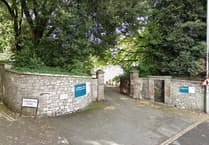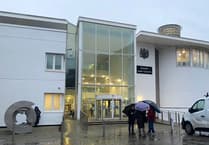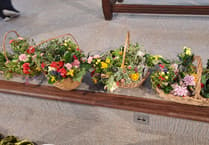PROFESSOR James Pearce-Higgins, Director of Science at the British Trust for Ornithology (BTO) has compared the speed and scale of Avian Flu’s impact on breeding seabirds earlier this year to the way pesticide use in the 1950s pushed some UK raptors close to extinction, and the devastating effect on farmland birds of agricultural intensification in the 1970s and 1980s.
In the UK, 61 species have tested positive for the disease since the start of an outbreak that, in just a single summer, has done severe damage to the internationally important UK populations of species including Gannet and Great Skua.
The world’s oldest-known Gannet, which bred in the Channel Islands, died of Avian Flu earlier this year.
An estimated 17,000 Barnacle Geese died of Avian Flu in Scotland last winter, Professor Pearce-Higgins explained to the committee, adding that there were now signs the disease could be impacting other water birds, such as Mute Swan.
Raptors also appear vulnerable to catching Avian Flu, he continued, with notable mortalities reported among Hen Harriers and White-tailed Eagles, both conservation priority species, as well as other more common species like buzzard.
Professor Pearce-Higgins called for a multidisciplinary approach, with conservationists working alongside the poultry industry, virologists and wildlife disease experts to understand how the virus is transmitted between birds, both in the wild and in domestic settings.
Only then can we properly assess the most effective mitigation measures.
Although some strains of Avian Flu have their origins in wild bird populations, the highly pathogenic form behind the current outbreak was first recorded in farmed geese in China in 1996.
Birds reared in commercial settings are often kept in high densities which increase the likelihood of viruses being transmitted.
It later spread to wild birds, many species of which are migratory and unwittingly carry the infection with them as they move around the globe.
While data from bird ringing and other BTO-led long-term monitoring schemes have helped scientists to establish the scale of the outbreak, the true impact of Avian Flu on the UK’s wild birds remains unknown. Only by surveying seabird colonies next spring, once the remaining birds have returned to breed, will the true scale of loss for those species be known.
For other types of bird, the story may just be beginning.
Professor Pearce-Higgins said: “It is vital that the Environment, Food and Rural Affairs Committee understand the unprecedented nature of the current situation and the risk it poses to our internationally important wild bird populations.
“Scientists at BTO and elsewhere are working hard to track the impact of Avian Flu but more research will be required before we can begin to understand just how bad things are.”




